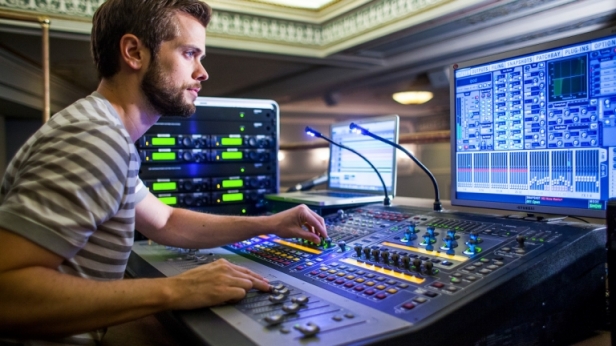Within an animation studio, there are many stages that must be undergone in order to create an animation. This means that there are many roles to be covered that are as important as each other. Whilst there might be many roles, there are some that can be covered by one person and it really depends on the size of the studio and how they utilise their staff and resources.
Producer & Production Assistants

source: google images
The producer can be considered the head of the studio. Together with their assistants, they must work to ensure that they stay within the budget of the project, provide their studio with the required materials, hardware and software and ensure that the whole team runs smoothly and efficiently towards their goal. Producers might also have to handle negotiating with various investors and broadcasters for the finished product.
Successful producers will ensure that all work is completed in time whilst allowing enough resources and space for creative development for their directors and designers.
Director

source: google images
Directors stand as the creative lead and oversee visual, design and narrative decisions concerning the project. People in this position are involved all throughout the process and in charge of how the project develops.
Animation Director/ Creative Director

source: google images
In most studios, directorial roles will be handled by one person but within larger studios, it can be necessary to have more people overseeing the schedule, budget and other aspects required by the task at hand.
Scriptwriter

source: google images
Scriptwriters work with the editors, clients and voice actors throughout the task to ensure that the script comes across as desired for the project.
Character Designer/ Developer

source: google images
A character designer will be creative in creating distinctive characters with flair as well as sometimes taking part in the concept creation and modelling so that the designer’s vision is enabled to truly come to life.
Storyboard Artists & Assistants

source: google images
Storyboard artists and assistants are the ones who turn the script into a series of sketches that represent how they want the animation to look. With the help and guidance of the directorial and scriptwriting staff, they ensure that the narrative, pacing, plot and continuity are on par to how they want it.
Modelling/Model Maker

source: google images
Using the references and ideas fed from the design team, modellers and model makers are in charge of creating characters, environments and props within a physical, three-dimensional space. This could range from using clay to model characters to using computers to create CG characters.
Animator

source: google images
As expected, animators are a main role within an animation studio. The type of animator can vary from 3D or 2D computer animator, 2D hand drawn animator and even stop motion. Using their design style, they animate the storyboard and bring scripts and visions to life.
Texture Artists & Digital Painters

source: google images
These people are responsible for creating an array of textures ranging from skin and hair to scales. These textures are wrapped around models to add more depth and complexity to their design.
Inbetweeners

source: google images
The main animator draws the key parts of movement of, for instance, a character and so they leave gaps in the movement. This is where the inbetweener comes in to fill in the key poses that allow the continuity of movement of the character within the animation.
Compositor

source: google images
Compositors complete the look of an animation, adding final touches like shadows, motion blur and colour matching; blending layers and material to finalise the animation.
Voice Over Artists

source: google images
Rather than working internally for a single studio, these people are normally hired for a specific project or series for recording. Voice over artists or voice actors create the dialogue for the animation, using concepts and ideas from the rest of the team to ensure that they accurately execute the personality of the characters.
Sound Designer

source: google images
Sound designers are in charge of audio production and how it is created for the project. This includes creating soundtracks of music, sound effects, editing pre-recorded sounds so that they fit into a specific setting and more.
Studio Manager

source: google images
Studio managers focus on the upkeep of the studio. Paying bills, keeping an eye on stocks, materials and equipment is all part of managing the studio and keeping it fit for usage by staff.
Animation can be found in various places. Not only is it used within the entertainment industry for children’s cartoon shows and movies in general, but it is utilised within businesses as well in the form of making promotional material.
For example, Passion Animation Studios has made an array of animated adverts for the insurance price comparison company ‘Compare The Market’ with their two staple meerkat characters.
They also created a game trailer for ‘League of Legends’ featuring the song ‘Legends Never Die’ by Against The Current.
source: google images
Character animations from the 2D fighting game ‘Skullgirls’
Within games, almost everything can be animated if desired. The scenery, UIs, characters and more can vary from game to game – whether it’s a walk cycle or an idle fighting stance.


